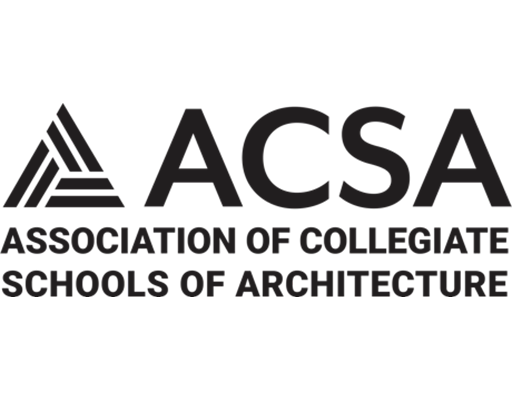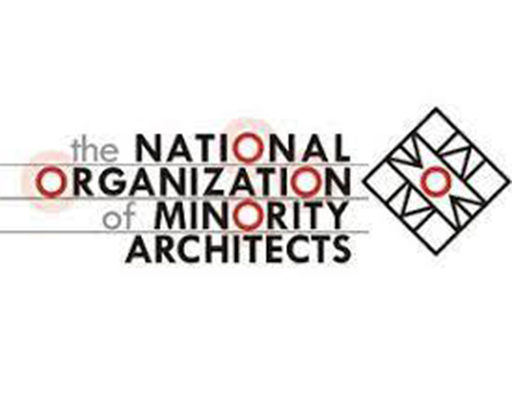Affiliated Organizations
Important Info About Becoming an Architect:
In general, to become an architect, one must complete the following steps:
- Successful completion of a B.Arch. or a M.Arch at an accredited school of architecture in the US
- A prescribed number of hours working within the architectural industry
- Successful completion of architectural registration exams as required by the state in which one applies
At least 13 states allow one to apply for the state’s architectural registration exam without a degree from an accredited school of architecture although the prescribed number of hours working with in the architectural industry are increased. One must check with the individual states.
Why bother taking the architectural registration exams? Only those who successfully pass the exams are “architects.” Those who did not pass the exams are graduates or designers but are not legally able to take on the full responsibilities of being an architect.

What is the American Institute of Architects [AIA]?
Since 1857, the AIA has been dedicated to the profession of architects and the architecture and built environment of the United States. Here are excerpts from their website at https://www.aia.org.
We stand for equity and human rights
Access to good design is a fundamental right, and architects are the agents of change to make this right a reality. We stand for universal respect for human dignity, and the unbiased treatment of all persons in employment, civic, and business transactions regardless of race, gender, sexual orientation, gender identity, physical abilities, or religious practices. Our commitment to tolerance is evidenced not just by the policies we adopt, but in the words we speak, the actions we take, and the buildings we design.
This is why we advocate for protecting and expanding laws that reflect these values, such as fair housing policies, civil rights protections, and accessibility to the built environment for all.
We stand for architecture that strengthens our communities
Infrastructure is more than roads and bridges. It is the public buildings that are the bedrock of our communities—like schools, hospitals, libraries, police and fire stations, parks and government buildings. For too long, policymakers allowed these spaces to deteriorate, reducing safety and diminishing the quality of life for millions across the nation. Architects are uniquely positioned to guide policymakers to make informed decisions about reinvesting in our communities’ essential buildings and spaces. That is why we advocate for policies that invest in well-designed civic infrastructure.
We stand for a sustainable future
At a time when the world is feeling the damaging effects of excessive carbon in our atmosphere, AIA will continue to advocate for policies that protect the environment by encouraging the design, preservation and construction of high-performing buildings. Reducing the carbon footprint of buildings is not just good for the environment; it’s good for business. According to a 2015 study, from 2011 to 2014, the green construction market generated $167.4 billion in GDP, supported over 2.1 million jobs and provided $147.7 billion in labor earnings. That is why we advocate for policies that lead to energy efficient, carbon neutral buildings.
We stand for protecting communities from the impact of climate change
Global warming and man-made hazards pose an increasing threat to the safety of the public and the vitality of our nation. Rising sea levels and devastating natural disasters result in unacceptable losses of life and property. Resilient and adaptable buildings are a community’s first line of defense against disasters and changing conditions of life and property. That is why we advocate for robust building codes and policies that make our communities more resilient.
We stand for economic opportunity
Architects, the backbone of the nation’s design and construction industry, are entrepreneurs and small businesses. Working in offices, storefronts, and home offices in every community, design firms do more than simply create great spaces: they create well-paying jobs and opportunity. But with narrow profit margins and increasing costs of running a firm, many struggle just to meet their business plans.
We stand for federal policies that help firms thrive, not hold them back. That means a tax code that treats architects fairly, small business programs that provide loans and financing support and programs that give small firms the chance to compete. That is why AIA advocates for policies that ensure small firms remain strong contributors to the nation’s economy.
We stand for investing in the future
A generation of young people is being held back by a lack of access to education and the crushing burden of student debt. Nowhere is this truer than in architecture, where recent graduates are often forced to leave the profession to pay down student loans. Without a pool of qualified architects to design buildings, projects will not move forward, stifling economic development. That is why AIA advocates for policies that provide better access and financing for young people to enter and remain in the profession of architecture
We speak up, and policymakers listen
Together, AIA members carry a powerful voice for the values they uphold in their practices each and every day. As natural facilitators and problem-solvers, architects stand ready to develop new policies that create a better, stronger, and more equitable and sustainable society. Through a culture of values-based advocacy, AIA members are committed to engaging in the policy-making process and to focus the power of design on solving the challenges facing our great nation.

What is the Association of Collegiate Schools of Architecture [ACSA]?
Founded in 1912, the ACSA is an international association of architecture schools. Members include all of the accredited professional degree programs in the United States and Canada as well as international schools. https://www.acsa-arch.org
Schools of architecture offer Bachelor of Architecture degrees [B.Arch] which generally requires 5 years of education and Masters of Architecture degrees [M.Arch] which generally requires 2 to 3 three years of education including a bachelor’s degree. Other degrees are offered at schools of architecture as well such as Bachelor of Science or a Bachelor of Arts with a major in architecture and other degrees. These are 4-year programs.

What Is the National Council of Architectural Registration Boards [NCARB]?
The NCARB’s mission is to support architects earn their architectural license and maintain their practice.
State requirements differ to become an architect but all require that one must pass the national registration exams in order to acquire an architectural license to practice.
The NCARB provides information and guidelines for preparing and completing the exams as well as obtaining reciprocity within the various states. See the NCARB website for more information. https://www.ncarb.org/become-architect/destination-architect
The following states do not require a degree from an accredited school of architecture in order to sit for the exams. The number of hours and often alternative requirements differ by states according to their elimination of this option.
Washington, Idaho, California, Arizona, Colorado, Oklahoma, Tennessee, Wisconsin, Maryland, Pennsylvania, New York, Vermont, and Maine.

What is the The National Architectural Accrediting Board [NAAB]?
The National Architectural Accrediting Board, established in 1940, is the oldest accrediting agency for architectural education in the United States. The NAAB accredits professional degrees in architecture offered by institutions with U.S. regional accreditation. See their website for more information. https://www.naab.org/
NAAB provides accreditation services and oversight to ensure architecture programs meet key quality assurance responsibilities. In 2020 NAAB embraced a more comprehensive approach to accreditation, one that utilizes outcome-based criteria to assess not only whether a program effectively teaches, but also whether students are learning and demonstrating competency in their area of study.

What is the National Organization of Minority Architects [NOMA]?
The following is an excerpt from the https://www.noma.net/about-noma/ website:
“NOMA, which thrives only when voluntary members contribute their time and resources, has as its mission the building of a strong national organization, strong chapters and strong members for the purpose of minimizing the effect of racism in our profession.
Strength in NOMA is built through unity in the cause that created the organization. Our impact is felt when our organization wrestles with the dilemmas that face this nation, particularly as they affect our profession. There is strength in numbers. By increasing the number of people in this organization, we add strength to the voice with which we can speak against apathy, bigotry, intolerance and ignorance; against abuse of the natural environment; and for the un-empowered, the marginalized and the disenfranchised.
By building a strong organization, we develop a showcase for the excellence and creativity which have been ignored for so long. Through our publications and conferences, we are able to inform the world that minority professionals have the talent and capabilities to perform in design and construction with any other group.”

What is The American Institute of Architecture Students [AIAS]?
The following is an excerpt from the https://www.aias.org website:
The American Institute of Architecture Students (AIAS) is an independent, nonprofit, student-run organization dedicated to providing unmatched progressive programs, information, and resources on issues critical to architecture and the experience of education. The AIAS aims to promote excellence in architectural education, training, and practice; to foster an appreciation of architecture and related disciplines; to enrich communities in a spirit of collaboration; and to organize students and combine their efforts to advance the art and science of architecture.
These value statements reflect our programs, events, initiatives, and culture that can help tell the story of an AIAS member.
AIAS VALUE STATEMENTS:
IMPACT: We advocate for and enact positive change.
COMMUNITY: We foster an inclusive network of peers that learn from, support, and drive one another.
GROWTH: We inspire students to reach their greatest potential through meaningful learning opportunities.
PASSION: We pursue large goals and aspirations through each member’s enthusiasm.
PERSPECTIVE: We link the profession’s opportunities to architectural education.
BALANCE: We promote respectful relationships, an environment of diversity, and a thriving studio culture
